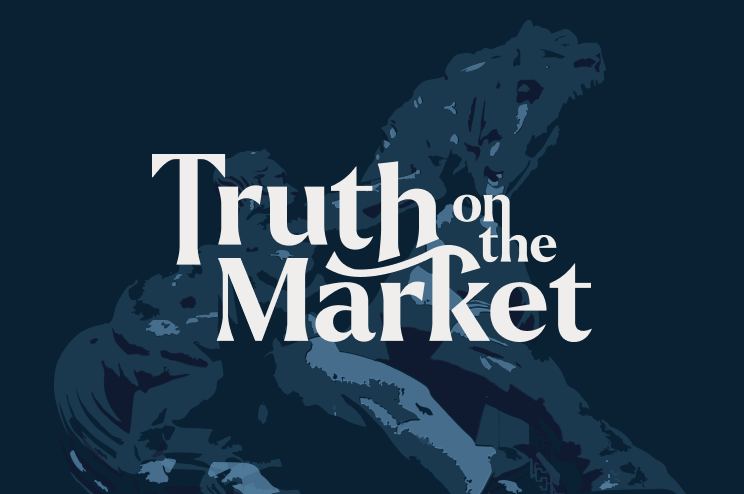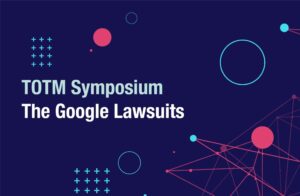Coda: Varney withdraws Section 2 Report
I guess it comes as little surprise that Christine Varney has withdrawn the Section 2 Report. The comments made in the statement withdrawing the Report indicate . . . well, that Varney isn’t convinced by reading this blog, among other things. Coming on the heels of our Section 2 Symposium, the news is jarring, although ... Coda: Varney withdraws Section 2 Report
Section 2 Symposium: Wrap Up
We would like to thank all of our participants and commenters for an outstanding symposium. This was a truly impressive collection of commentaries on Section 2 and the Section 2 Report, and it should stand for some time as a useful, interesting and provocative collective statement on the issues. For easy reference, you can access the ... Section 2 Symposium: Wrap Up
Section 2 Symposium: David Evans on ‘Tying as Antitrust’s Greatest Intellectual Embarrassment’
I’d like to propose a contest for the greatest intellectual embarrassment of antitrust. Let me name the first contestant—tying, which some of you know has been one of my favorite for years. Here’s why. First, there is no persuasive theoretical or empirical evidence that tying is a business practice that is likely to harm consumers. ... Section 2 Symposium: David Evans on ‘Tying as Antitrust’s Greatest Intellectual Embarrassment’
Section 2 Symposium: Alden Abbott on the International Perspective
As I indicated in my prior blog entry, U.S. competition policy vis-à-vis single firm conduct (“SFC”) is best viewed not in isolation, but, rather, in the context of other jurisdictions’ SFC enforcement philosophies, and efforts to promote greater SFC policy convergence worldwide. Given the proliferation of competition law regimes, firms that do business in multiple ... Section 2 Symposium: Alden Abbott on the International Perspective
Section 2 Symposium: Bill Page on Microsoft’s ‘Forward-Looking’ Monopolization Remedy
The DOJ’s Section 2 Report speaks in general terms about the costs and benefits of various remedies for monopolization. It prefers “prohibitory” remedies, but holds open the possibility of “additional relief,” including “affirmative-obligation remedies. The Report specifically mentions the protocol-licensing requirement of the Microsoft final judgments (§ III.E, entered in November 2002) as an example ... Section 2 Symposium: Bill Page on Microsoft’s ‘Forward-Looking’ Monopolization Remedy
Section 2 Symposium: Tim Brennan on the Relationship Between Regulation and Antitrust
When I first started working in antitrust at the Justice Department over thirty years ago—there’s a hard reality to accept—the Antitrust Division was then embroiled in an effort to reform the regulation of oil pipelines. The argument on this now obscure issue was that effective prevention of the exercise of market power by natural monopoly ... Section 2 Symposium: Tim Brennan on the Relationship Between Regulation and Antitrust
Section 2 Symposium: Herbert Hovenkamp on Patents and Exclusionary Practices
One interesting aspect of the DOJ Report on Section 2 is the scant, episodic treatment of IP issues. The Report rejects the presumption of market power for patent ties (p. 81); has a very brief discussion of refusal to license patented parts in which it properly rejects the reasoning of the Ninth Circuit’s Kodak decision ... Section 2 Symposium: Herbert Hovenkamp on Patents and Exclusionary Practices
Section 2 Symposium: Bill Kolasky on Proving Market Power
The market power section of the Department’s Single Firm Conduct report is one of the strongest sections of the report. It provides an exceptionally clear discussion of the market power element under Section 2. It recognizes, in particular, that a violation of Section 2 requires more than mere market power, but rather a finding of ... Section 2 Symposium: Bill Kolasky on Proving Market Power
Section 2 Symposium: Josh Wright on An Evidence Based Approach to Exclusive Dealing and Loyalty Discounts
The primary anticompetitive concern with exclusive dealing contracts is that a monopolist might be able to utilize exclusivity to fortify its market position, raise rivals’ costs of distribution, and ultimately harm consumers. The unifying economic logic of these anticompetitive models of exclusivity is that the potential entrant (or current rival) must attract a sufficient mass ... Section 2 Symposium: Josh Wright on An Evidence Based Approach to Exclusive Dealing and Loyalty Discounts
Section 2 Symposium: Tim Brennan on Predation, Exclusion, and Complement Market Monopolization
As evidenced by this on-line symposium, the handling of cases under the rubrics “monopolization,” “single firm conduct”, or “abuse of dominance” continues to be debated by the competition policy community. This debate, as evidenced by the Antitrust Division’s Sept. 2008 single firm conduct report and the FTC responses, is not restricted within the U.S. The ... Section 2 Symposium: Tim Brennan on Predation, Exclusion, and Complement Market Monopolization
Section 2 Symposium: Howard Marvel on Safe Harbors for Short Term Exclusive Dealing Contracts
Exclusive dealing prevents the bait-and-switch behavior by dealers who convert customers drawn by one brand to the products of its rivals. Despite the red flag of “exclusive” in its title, the practice is ordinarily uncontroversial, indeed innocuous. Automobile manufacturers often pay incentives to encourage dealers to deal exclusively in their vehicles. Business format franchising ensures ... Section 2 Symposium: Howard Marvel on Safe Harbors for Short Term Exclusive Dealing Contracts
Section 2 Symposium: Dan Crane on Buyer-Instigated Bundled Discounts
Bundled discounts have been one of the hottest monopolization topics of the last decade. Much of the trouble began with the Third Circuit’s en banc decision in LePage’s v. 3M, which reversed an earlier 2-1 panel decision which in turn had overturned a plaintiff’s jury verdict largely based on 3M’s bundled discounts. After the Solicitor ... Section 2 Symposium: Dan Crane on Buyer-Instigated Bundled Discounts





